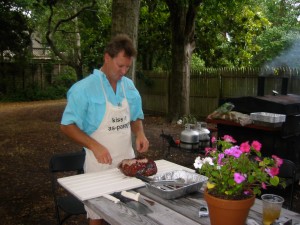One weekend, while I was a college student, I went home with my friend Susan to Chapel Hill, NC.
Chapel Hill is a vibrant place and home to UNC Chapel Hill. The town is funky and in the late 80’s it was filled with galleries and bookstores as well as a progressive music scene.
As a wide-eyed stranger, I was enamored with my surroundings as Susan drove me around in her red Honda Accord, showing me the sights that included, Weaver Street Market Food Co Op, the Ackland Art Museum, and UNC Planetarium. We walked on the greenway, before I even knew what a greenway was. We shopped on Franklin Street at thrift stores and funky jewelry boutiques. The people who strolled by were fashionable and offbeat.
The allure of this quant hipster town would one day call me back and I would make my home in Chapel Hill and Durham for several years. But on this weekend, I was simply a visitor and enjoying myself as I breathed in the Tar Heel air and became acquainted with Susan’s family.
Chapel Hill is known for its amazing eclectic restaurants. Just a few years ago, Bon Appetite Magazine named it “America’s Foodiest Small Town”. However, long before it earned that title, on a spring day back in 1989, Susan’s dad, Paul wanted to take his daughter and me out to a fancy dinner.
One of my delights is good food. I must have inherited my palette from my parents who love to travel and try different foods. As a child, whenever we trekked from my hometown, to a larger city, it was a thrill to eat out. I will never forget the first time I ate Chinese food at the Oriental Inn in Lexington, KY. Hong Sue Shrimp. Shrimp fried in egg tempera batter with sautéed vegetables. I didn’t think it could get any better than that.
I was looking forward and curious about where Paul was planning to take us to dinner. Paul announced his choice: “Girls I really want this night to be special. This is a great restaurant with unique food and I want to share it with my daughter and her friend, Charlotte. We are going to Crook’s Corner for dinner”.

I had no idea what Crook’s Corner was but it sounded great to a poor college student and an alternative to ramen noodles in a hot pot in my college dorm room. Paul continued, “Crook’s Corner is a Chapel Hill restaurant that serves world famous southern cuisine.”
The oxymoron of “world famous and southern cuisine” dumbfounded me. I had grown up eating the Appalachian version of southern cooking. Soup beans, green beans and corn bread were staples on my family’s dinner table. My grandmother was revered for her recipes. Butter and lard had been her downfall but the glory that made her cooking so delicious. My mother did not compare to my granny as a cook, but she also held back on the fat back and introduced her family to salad. We also had local greasy spoon restaurants in town such as the Circle T and the Chat and Chew. But neither of these would have ever had the word “cuisine” associated to their name. It was just food and no one certainly made a production out it. To me, southern food was why you went out to dinner in the first place…. It was a way to escape what was familiar.
So it was on this day that something so personal to me as the food I ate growing up became a revelation. People actually desired something I took for granted.

Over the years, I have reflected on this experience. It opened me up to something right before my eyes. Just like the people of the south, the food of the south reflects a unique blend of cultures and culinary traditions. Native American, Spanish, French, African American and British all contributed to the development of “southern food”. Good food is a part of the art of living. Crook’s Corner, the “temple of southern cooking” lives up to its reputation and carries on this varied southern food tradition.
Somehow along the way, southern cuisine became a popular avenue to experience southern traditions in much that same way as someone may eat Italian food to experience Italian traditions. That seems so strange to me, because my familial culture, eastern Kentucky, is the antithesis of all of that.
It was something you held close because of your twangy accent or because of the way “outsiders” reacted to you. I guess you could call it the “Wow Factor” of a geographic region that has always been marginalized in the media and in the mainstream. The very thing that is considered a mockery also attracts fascination and attention.
I sometimes wonder if people don’t grasp for something that they have lost, like a cherished memory through the love of a good meal. Tiny bits of that memory can be conjured up with the food we eat or grew up eating. Food is a powerful avenue to our hearts.
So, in my own life, I am thankful for my older brother John. He lives in Pawleys Island, SC and is the designated family chef. John can make a mean pot of soup beans. He can artfully string shucky beans together as well as make the best low country shrimp and grits I have ever tasted. I am glad to know that my granny’s flair for cooking is still alive and well in the culinary talents of my brother.
Thank goodness for all of the grannies of the world and their unique family and communal recipes.

John doing what he does best



